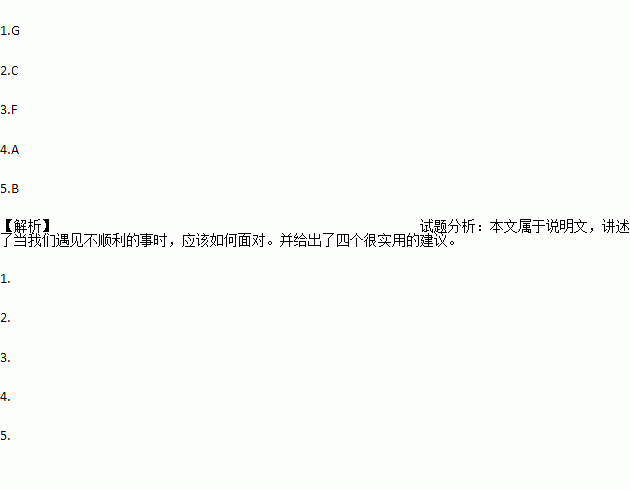题目内容
Things to Remember When You’re Having a Bad Day
Even the hardest days contain lessons that will help you be a better person. Feeling down? Consider these things to remember when you’re having a bad day.
● No one promised life would be perfect.
1.Don’t base your happiness on meeting every expectations you set for yourself. It is good to be ambitious, but you’ll never be perfect. If you expect otherwise, your life will be filled with disappointments.
● 2.
Trees that are slow to grow bear the best fruit. Don’t kid yourself into thinking success will come quickly. It isn’t easy to be patient, but anything worth doing requires time.3..
● Without hard times, you wouldn’t appreciate the good ones.
Strength does not come from winning. Your struggles develop your strengths. When you go through hardships and decide not to give up, that is strength.4.. It is hard to find much to smile about when you fail, but how else would you improve yourself? If you look at failures as a part of your growing process, you’ll stay positive and follow your goals for as long as it takes.
● It’s OK to cry sometimes.
Do not apologize for crying. Without this feeling, we are only robots. Don’t be afraid of crying.5.Instead, it is an acceptable way to let go of your depressed feelings. If you let those feelings build up without release, you’ll have a much harder time dealing with them later.
A. Don’t get sad if you lose.
B. It isn’t a sign of weakness.
C. Success doesn’t happen overnight.
D. It’s not okay to foreign now and then.
E. Don’t compare your life with others.
F. Remember: Rome was not built in a day.
G. If you look for perfection, you’ll never be content.

